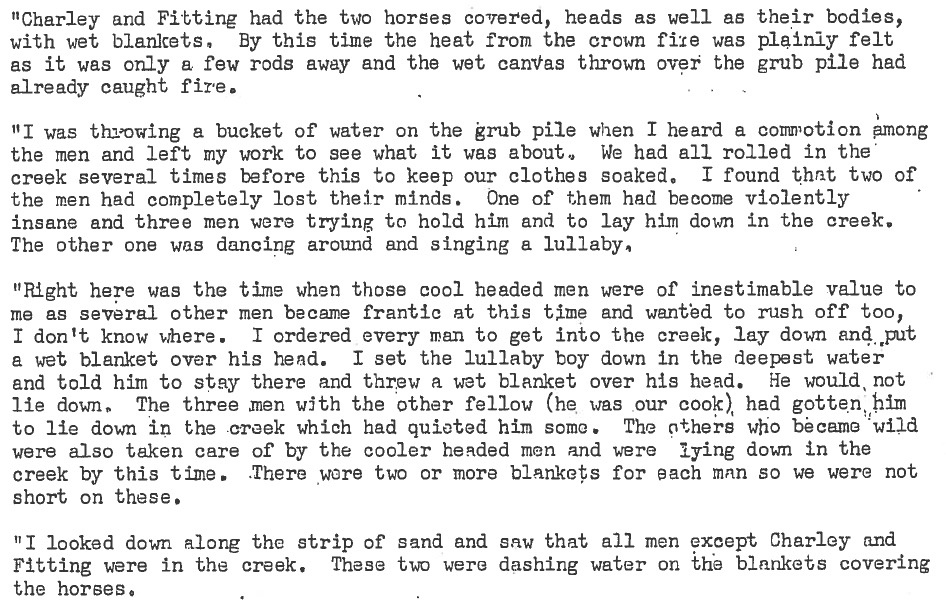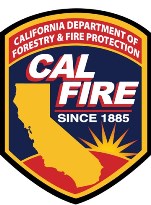Britt Rosso of the Wildland Fire Lessons Learned Center discovered a 23-page typewritten account of some of the stories from the 1910 Big Burn fires that blackened huge areas of Idaho and Montana — the fires that changed the course of fire management in the United States.
Mr. Rosso describes his find:
As I was digging through some boxes at work, I came across a hard copy of this report on the 1910 fires. It was written in 1942 by Elers Koch, who was the Forest Supervisor on the Lolo NF in 1910. He created this 1910 fire summary so history would not be forgotten. It’s now posted on our LLC web site.
There are some amazing stories in here, and there are also reports from seven different fire crews on how they dealt with the “Great Fire”. There is a crew story in here about “burning off a large area…thinking that they would have absolute protection”. Maybe Wag Dodge wasn’t the first FF to ever use an escape fire.
Take your time and read it slowly.
Since documents at the Lessons Learned Center are known to be moved around and become difficult to find, we stashed a copy here for our readers.
One of the stories features the 30-person Moose Creek Crew led by Deputy Supervisor Ed Thenon, who wrote the account. (It is not clear what Forest Mr. Thenon was from.) They were working on a fire in Idaho in the upper Selway River area near Moose Creek. The sleeping crew, which was in an unburned area not near the fire edge, was aroused at 10 p.m. by debris falling in their area. Soon what one of the men thought was a “falling star” landed nearby and started a spot fire. When they could see the fire approaching they moved their camp and their food, or “grub”, to a small six-foot wide sand bar, or strip, in a creek that had water six to eight inches deep. Mr. Thenon told the men to lie in the creek and put wet blankets over their heads. Wet blankets were also put on their horses.
Below is a brief excerpt from his account. Click on it to see a larger version:
Even though two men ran off and took refuge in another area, all 30 of them survived. However “the ‘lullaby boy’ was taken to an asylum”.
Thanks and a tip of the hat go out to Mike.






